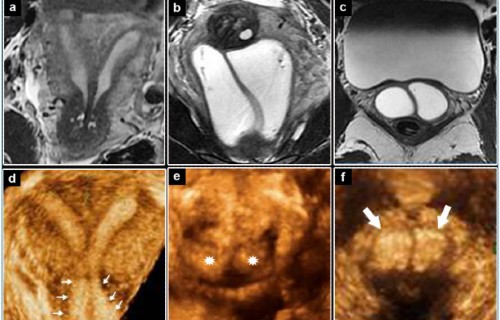
The Dr Betlem Graupera, Head of the Gynaecological Imaging Diagnostic Service at Dexeus Mujer, is part of the group of four experts who have prepared a Guide for the diagnosis of uterine malformations (UM) and lower genital tract anomalies, published by the Spanish Society of Gynaecology and Obstetrics (Sociedad Española de Ginecología y Obstetricia – SEGO).
The guide provides information on the latest work carried out in this area and assesses the diagnostic efficacy of the different examination techniques in terms of sensitivity and predictive value. It also offers prevalence data in the population and indicates that three-dimensional ultrasound (3D ultrasound) is considered the first-line technique in the diagnosis of UM, and must always be accompanied by a careful bimanual gynaecological examination and speculoscopy (for adequate study of the cervix and vagina). Likewise, it offers practical indications for the realization of the capture of the 3D volume, as well as the reconstruction of these volumes to obtain the diagnosis of the malformations.
Hysteroscopic and laparoscopic techniques would be reserved for complex cases or that may benefit from them for their treatment. Magnetic Resonance Imaging (MRI) is increasingly limited in its use in this diagnosis since it rarely provides new information to that provided by 3D ultrasound.
The guide also includes a table that indicates the equivalences between the different types of MU according to the two most used classification systems, that established by the American Fertility Society (AFS) and that of the European Society of Human Reproduction and Embryology and the European Society of Gastrointestinal Endoscopy (ESHRE / ESGE) as well as the ultrasound characteristics of each one, using conventional ultrasound and 3D ultrasound, and offers recommendations to professionals when preparing reports.
DEXEUS CAMPUS
Gran Vía de Carles III 71-75
08028 Barcelona
campus@dexeus.com
(+34) 93 227 47 09
® Copyright 2021-2025 Dexeus Mujer Foundation – Gran Via Carles III 71-75. 08028 Barcelona. Spain
| Cookie | Duration | Description |
|---|---|---|
| cookielawinfo-checkbox-analytics | This cookie is set by the GDPR cookie consent plugin. The cookie is used to store the user's consent for cookies in the "Analytics" category. | |
| cookielawinfo-checkbox-functional | The cookie is set by the GDPR cookie consent to record user consent for cookies in the "Functional" category. | |
| cookielawinfo-checkbox-necessary | This cookie is set by the GDPR cookie consent plugin. Cookies are used to store the user's consent for cookies in the "Necessary" category. | |
| cookielawinfo-checkbox-others | This cookie is used by the GDPR component. It is used to store the user consenting cookies in the "Other" category. | |
| cookielawinfo-checkbox-performance | This cookie is set by the GDPR cookie consent plugin. The cookie is used to store the user's consent for cookies in the "Performance" category. | |
| elementor | ||
| viewed_cookie_policy | The cookie is set by the GDPR cookie consent plugin and is used to store whether or not the user has consented to the use of cookies. It does not store any personal data. |
| Cookie | Duration | Description |
|---|---|---|
| _icl_visitor_lang_js | To allow multi-language functionality for web content. | |
| wpml_browser_redirect_test | Used to verify if cookies are allowed in the browser. |
| Cookie | Duration | Description |
|---|---|---|
| _ga | The _ga cookie, installed by Google Analytics, calculates visitor, session and campaign data and also tracks site usage for the site's analytics report. The cookie stores information anonymously and assigns a randomly generated number to recognize unique visitors. The _ga cookie, installed by Google Analytics, calculates visitor, session and campaign data and also tracks site usage for the site's analytics report. The cookie stores information anonymously and assigns a randomly generated number to recognize unique visitors. | |
| _ga_1WD9MFDMJK | This cookie is installed by Google Analytics. |
| Cookie | Duration | Description |
|---|---|---|
| wp-wpml_current_language | Necessary for the operation of the website in the different languages |